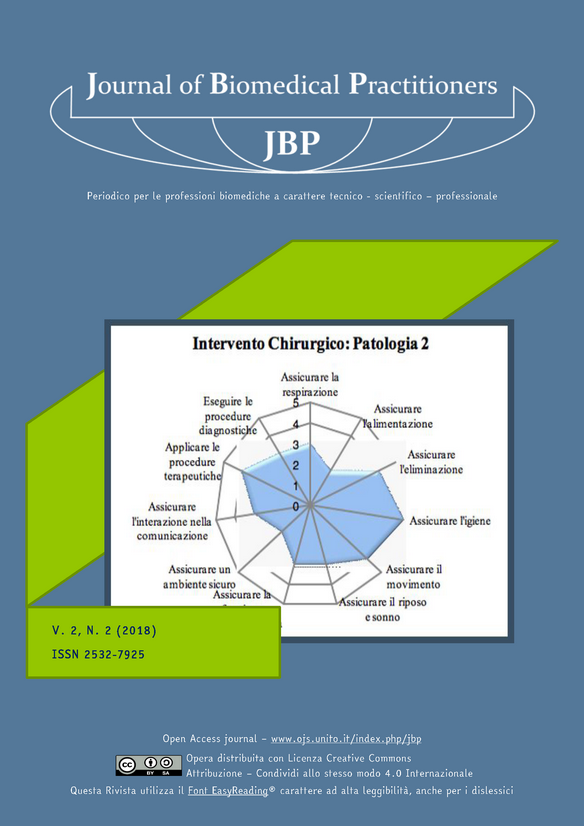Index of caring complexity as a management tool: a prospective observational study in two neurosurgical settings
Main Article Content
Abstract
Aim
Primary purpose: the study was carried out to measure the complexity of care, through the Methodology of the Index of Caring Complexity (ICC, Bruno Cavaliere 1999), in two cohorts of patients affected by intracranial neoplasia or by vertebral degenerative pathology recruited in the University Hospital “Ospedali Riuniti di Ancona”. Secondary purpose: the study aimed to investigate the number and the type of care needs, in order to identify the possible nursing interventions of the support staff.
Materials and methods
Research design: prospective observational study. Setting: the two neurosurgery wards of the University Hospital “Ospedali Riuniti di Ancona”. Patients enrolled: subjects affected by intracranial neoplasia or by vertebral degenerative pathology. Data collection: subjects evaluated in five stages of the hospital stay from 1st of February to 30th of June. Research tools: Bruno Cavaliere’s ICC 1.1.mbd Software for data collection; Statistical Analysis System 9.0 (SASIA) and Microsoft Excel for data analysis.
Results
80 patients were enrolled, 55% of them were male. For both cohorts of patients, it was found that the care complexity appears to be “medium complexity” on the day of admission to the ward, with a maximum intervention weight (IW) of 3; it appears to be “high complexity” on the day of surgery and on the first post-operative day with an IW of 5; it appears to be “medium complexity” on the third post-operative day with an IW of 4; it appears to be “low complexity” on the day of discharge from the ward with a maximum IW of 3. However, statistical differences have been observed between the care complexity in intracranial neoplasia and vertebral degenerative pathology.
Discussion
The statistical analysis highlighted that care complexity is higher in neoplasia (p<0.0001) in respect to vertebral degenerative pathology. Moreover, there aren’t statistically significant differences between the ICC on the third post-operative day and on the day of admission to the ward; therefore, they can be compared in terms of caring. Regarding the care interventions detected, those related to the sphere “nutrition”, “elimination”, “hygiene”, “movement” could be attributed to the Healthcare Assistant (HCA), figure not currently included in the activities of the two wards analyzed.
Conclusions
Measuring nursing care complexity through the Index of Caring Complexity, allows to program and optimize the distribution of the skills of the healthcare staff in different surgical days.
Downloads
Article Details
The authors agree to transfer the right of their publication to the Journal, simultaneously licensed under a Creative Commons License - Attribution that allows others to share the work indicating intellectual authorship and the first publication in this magazine.

